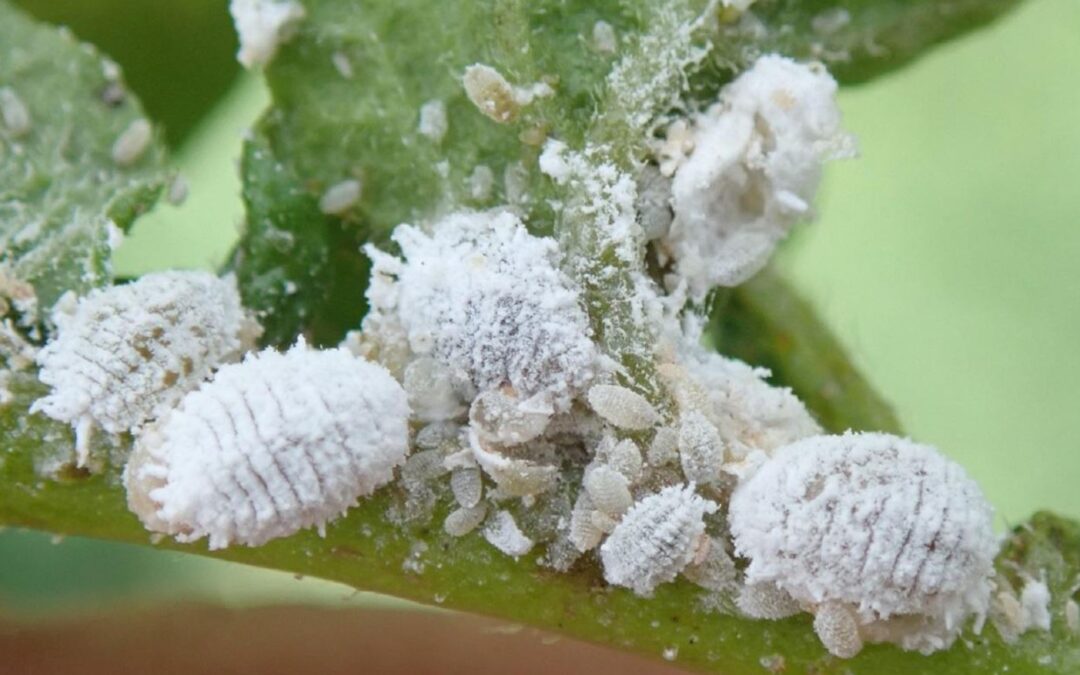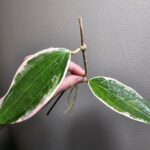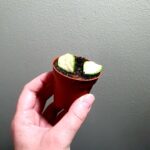Have you notice dreadful mealybugs on your beloved Hoya? What a nightmare!!
First things first… what are mealybugs and how to recognize them?
Mealybugs are small, soft-bodied insects belonging to the family Pseudococcidae. They are common pests of many indoor and outdoor plants, including Hoyas. Mealybugs are typically found on plant stems, leaf nodes, and the underside of leaves, where they feed on plant sap.
Mealybugs reproduce through a process called parthenogenesis, meaning they can reproduce without mating. Female mealybugs lay eggs in a cottony mass, often referred to as an “egg sac” or “mealybug cotton,” which provides protection for the eggs. These egg sacs can be found attached to plant stems or leaves.
Once the eggs hatch, the young mealybugs, known as nymphs, emerge and begin feeding on plant sap. They go through several molts as they grow, eventually reaching adulthood. Adult female mealybugs continue to feed and reproduce, laying more eggs and perpetuating the cycle.
Mealybugs can reproduce rapidly under favorable conditions, leading to population explosions that can quickly infest a plant. They also produce a waxy substance that helps protect them from predators and environmental conditions.
Mealybugs are known for their ability to hide in crevices and protected areas of plants, making them challenging to eradicate completely. Their presence can weaken plants, causing stunted growth, yellowing leaves, and leaf drop if left untreated.
It’s essential to monitor your plants regularly for signs of mealybug infestations and take prompt action to control them using methods such as manual removal, insecticidal sprays, or natural predators, depending on the severity of the infestation and your preferences for pest control.
What do they look like?
Mealybugs are small, soft-bodied insects belonging to the family Pseudococcidae. They are common pests of many indoor and outdoor plants, including Hoyas. Mealybugs are typically found on plant stems, leaf nodes, and the underside of leaves, where they feed on plant sap.
Mealybugs reproduce through a process called parthenogenesis, meaning they can reproduce without mating. Female mealybugs lay eggs in a cottony mass, often referred to as an “egg sac” or “mealybug cotton,” which provides protection for the eggs. These egg sacs can be found attached to plant stems or leaves.
Once the eggs hatch, the young mealybugs, known as nymphs, emerge and begin feeding on plant sap. They go through several molts as they grow, eventually reaching adulthood. Adult female mealybugs continue to feed and reproduce, laying more eggs and perpetuating the cycle.
Mealybugs can reproduce rapidly under favorable conditions, leading to population explosions that can quickly infest a plant. They also produce a waxy substance that helps protect them from predators and environmental conditions.
Mealybugs are known for their ability to hide in crevices and protected areas of plants, making them challenging to eradicate completely. Their presence can weaken plants, causing stunted growth, yellowing leaves, and leaf drop if left untreated.
It’s essential to monitor your plants regularly for signs of mealybug infestations and take prompt action to control them using methods such as manual removal, insecticidal sprays, or natural predators, depending on the severity of the infestation and your preferences for pest control.
Dealing with mealybugs on your Hoya plant can be frustrating, but with persistence and the right approach, you can effectively control and eliminate these pests. Here’s what you can do to fight mealybugs on your Hoya:
- Isolate Infested Plants: If you notice mealybugs on your Hoya, isolate the plant from your other plants to prevent the infestation from spreading
- Manual Removal: Use a cotton swab or cotton ball dipped in rubbing alcohol to manually remove mealybugs from the plant. Concentrate on areas where mealybugs are visible, such as along the stems, leaf nodes, and under leaves.
- Spray with Neem Oil: Neem oil is an effective organic insecticide that can help control mealybugs. Mix neem oil with water according to the instructions on the product label and spray the solution onto the affected parts of the Hoya plant. Repeat the treatment every 7-10 days until the infestation is under control.
- Insecticidal Soap: Insecticidal soaps are another option for controlling mealybugs. These soaps work by suffocating the pests on contact. Spray the affected parts of the plant thoroughly with insecticidal soap, ensuring complete coverage. Repeat the treatment as necessary, following the instructions on the product label.
- Prune Infested Parts: If the infestation is severe or localized to specific parts of the plant, consider pruning away heavily infested stems or leaves. Dispose of the pruned plant material in a sealed bag to prevent the mealybugs from spreading to other plants.
- Strengthen Plant Health: Healthy plants are better able to withstand pest infestations. Ensure your Hoya is receiving proper care, including adequate light, water, and nutrients. Avoid over-fertilizing, as this can attract pests.
- Monitor for Reinfestation: Keep a close eye on your Hoya plant after treating it for mealybugs. Check regularly for signs of new infestations and take prompt action if you notice any mealybugs or their egg sacs.
- Biological Control: In some cases, introducing natural predators of mealybugs, such as ladybugs or lacewings, can help control the population. However, this approach may not be practical for indoor plants.
Alternatively, you can use insecticide spray and here are some of my recommendations:
- Bug Clear Ultra
- Neudorff BugFree Bug and Larvae Killer Concentrate or Spray
- Substral POLYSECT 20ml mszyce, ziemiórki,WEŁNOWCE,WCIORNASTKI, Tarczniki
- MOSPILAN 20SP 10g Agrecol ,Fruit, Vegetables, House Plants, Aphids,thrips,other
By combining these methods and being diligent in your efforts, you can effectively combat mealybugs and keep your Hoya plant healthy and pest-free.


